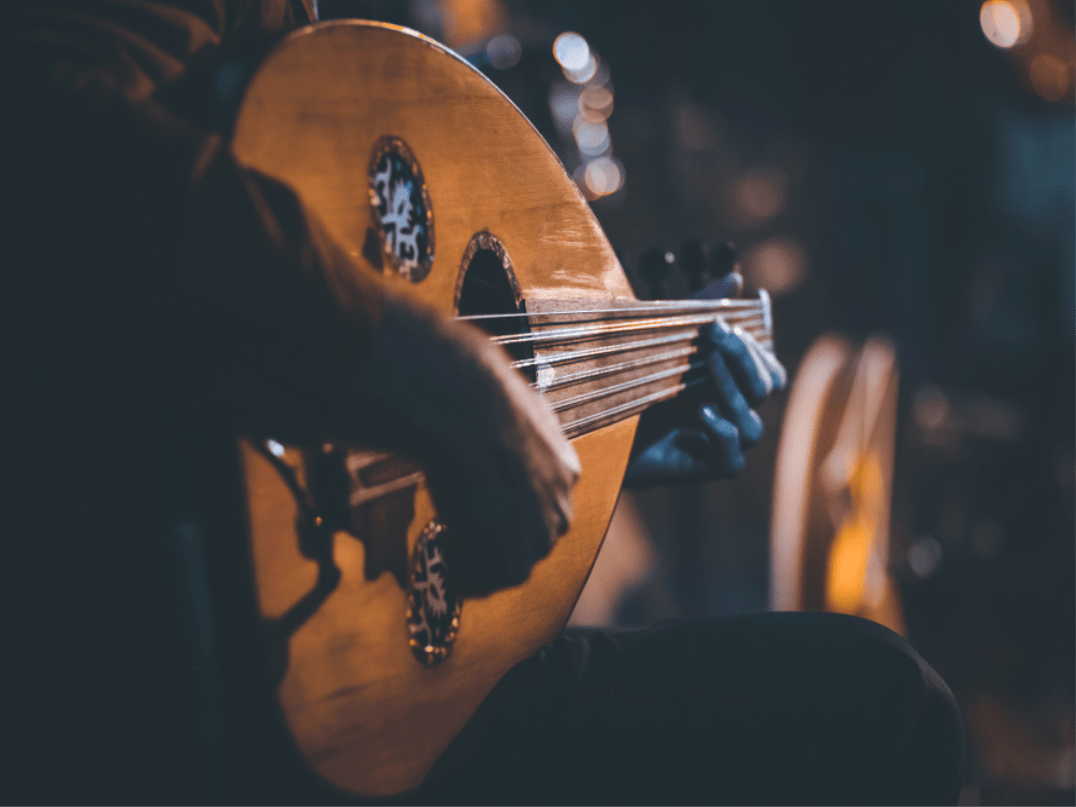Arab Music: An Introduction To The Enchanting Sounds Of “Tarab”


Walk through any Arab neighborhood on any normal day and you’re no doubt going to hear the music of Oum Kalthoum playing through the windows of quite a few houses. Oum Kalthoum was an Egyptian singer, songwriter, and film actress known for her vocal ability and unique style. She was active from the 1920s until her death in the 1970s. She was so loved in the Middle East, that she was dubbed “Kawkab al-Sharq” or the “Star of the East”. Even Egyptians called her “Egypt’s fourth pyramid”.
So, twenty years into the 21st century, what makes Oum Kalthoum still popular?
In a word, “tarab”.
Tarab has no equivalent in English. Some have tried to define it as the epic moment of the shared feeling of joy, pain, sorrow or any other intense emotion between the singers and musicians and their listeners.
When the listener reaches a point of “enchantment” or “ecstasy”, brought on by the singer, this is known as tarab. The performers were also known as the “sultanah” – the ones who are doing the “enchanting”. The effect can be so great upon the audience that it is sometimes referred to as “group hypnosis”. Oum Kalthoum was, and indeed still is, the queen of the sultanahs. Even after her death, she still casts her “spell” on her audience and takes them with her on the fantastical musical journey whenever her songs are heard.
Tarab, however, is not only the feeling you get when you listen to the music, but also that feeling you get when you dance to it. In other words, your dance is influenced by the emotion inspired from the music, and this is also tarab.
Professional Arab dancers often choose to use Tarab songs or music as a way to convey the feeling of the lyrics, the obsession with the repetition of phrases, the depth of the melody, the character of the various instruments, and power of subtle rhythm. They insist however, that we not call it as “tarab belly dancing” as that would be incorrect; rather, the correct way to describe it is to say “Dancing on Tarab”.
As the title of this post suggests, this is just a short introduction of tarab. We’ve only just scratched the surface. If you want to know more, there are many books written about tarab that you can find.
In the meantime, if you are trying to learn Arabic language skills by listening to Arab music and suddenly find yourself under the spell of its sounds, don’t worry. You’re just feeling tarab.
If you liked this article and want to learn more about the Arab culture or Arabic language, why not download the Kaleela Arabic language app? Arabic language apps are the best way to learn Arabic these days. With our app, you can start to learn Arabic alphabet letters as soon as you download it. In no time at all, you’ll be learning Arabic dialects like Levantine Arabic and Modern Standard Arabic. Get it today for your iOS or Android mobile device.